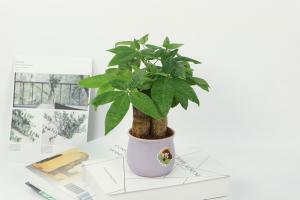How to Tie a Newly Planted Tree
Planting a tree is a great way to improve the environment and add beauty to your outdoor space. However, it is not enough to simply plant the tree and forget about it. In order to ensure that the tree grows strong and healthy, it is important to provide it with support as it establishes its roots in the soil. Tying a newly planted tree is a simple but critical task that can help the tree grow straight and tall. Here is how to tie a newly planted tree.
What You Will Need
Before you begin, gather the following materials:
A tree tie or strap
A stake, post or bamboo cane
A rubber mallet or hammer
A pair of scissors or pruning shears
Step 1: Choose Your Tie and Stake
Choose a tie that is made of a soft, flexible material to avoid damaging the bark of the tree. Nylon and rubber ties are good options. Make sure the tie is long enough to encircle the tree trunk and the stake or cane. For the stake, choose a sturdy wooden post or a bamboo cane that is taller than the tree and strong enough to withstand strong winds.
Step 2: Hammer the Stake into the Ground
Position the stake at a 45-degree angle to the tree, on the side the prevailing wind is coming from. This will help prevent the tree from leaning in the direction of the wind. Use a rubber mallet or hammer to drive the stake into the ground until it is firmly anchored.
Step 3: Tie the Tree to the Stake
Loop the tie around the tree trunk, just above the lowest branch. Then, wrap the tie around the stake or bamboo cane, and tie it in a knot or a half-hitch. Make sure the tie is snug but not too tight, as this can damage the bark of the tree. You should be able to slide two fingers between the tree and the tie.
Step 4: Check and Adjust the Tie Regularly
Check the tie regularly, especially during the first year after planting. As the tree grows, the tie may become too tight and start to constrict the trunk. Loosen the tie or replace it with a longer one if necessary. If the tree leans too much in one direction, adjust the tie by moving it higher up on the stake on the opposite side.
Conclusion
Tying a newly planted tree is a simple but crucial task that can help ensure the long-term health and stability of the tree. By following these steps and checking the tie regularly, you can help your newly planted tree grow straight and tall, and enjoy the many benefits it provides.

 how many times do yo...
how many times do yo... how many planted tre...
how many planted tre... how many pine trees ...
how many pine trees ... how many pecan trees...
how many pecan trees... how many plants comp...
how many plants comp... how many plants can ...
how many plants can ... how many plants and ...
how many plants and ... how many pepper plan...
how many pepper plan...
































